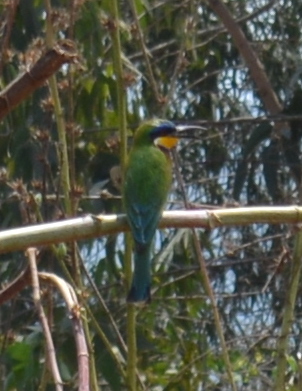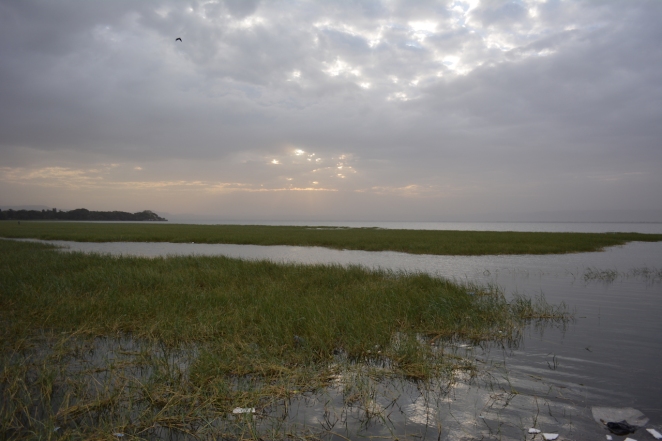Another New Year has been celebrated in Ethiopia, which is weird to think about. We celebrated New Year’s Eve by drinking milk and butter coffee – yes, coffee with milk, butter and salt in it. We ate akaayii (roasted barley, chickpeas and peanuts) with nugii (nyjer seed roasted and pounded to a paste with salt and garlic), popcorn with sugar and peanut butter cookies made by yours truly. Midnight celebration of the New Year is not really a thing here, so there were no fireworks or ball drop or anything like that. For New Year’s Day we ate doro wat, a stew of onions, berbere, hard-boiled eggs and chicken. We also ate our weight in homemade bread. We drank coca (think house-made coca cola minus the carbonation) and of course, coffee.
Last New Year we had only been living in our town 5 months and had only spent a total of 8 months in country. Now, we have been living in our town for 17 months and have spent a total of 20 months in country. I remember last year having no expectations of what would go on and kind of just following my landlord’s wife around, house to house and being the center of attention and conversation. This year had a totally different vibe. Reflecting on my behavior one year ago as compared to today I see how comfortable and confident I have become in my life here. How I have come to understand the cultural nuances and the language required to blend in rather than stick out. Of course, I will always stick out as the foreigner, especially in a town with literally no other foreigners, but I felt much more comfortable celebrating the holiday as a member of the community rather than a stranger. I participated in more conversations rather than just fielding the same questions like: “Are you doing research?” or “Is it possible for you to eat injera?” I even caught snippets of conversation around me as people were commenting on how I had learned so much about the culture and participated in it fully. I feel proud, especially because some parts of this experience have been incredibly trying and have brought me to the limits of my patience and luckily, taught me how to be a more gracious and patient person. I had reached a point a few months ago where it felt very difficult not to be offended and speak out when I perceived disrespect from someone. And a few months before that I would just let people say whatever they want for fear of offending someone. I have definitely hit the sweet spot of choosing my battles, understanding when what seems to be rudeness is just different cultural norms or poor language translation, and being able to find the words to calmly explain to someone what I find to be disrespectful (for example, outburst of laughing when I try to speak the local language). It was also nice this year to just walk around on my own and be personally invited to a few homes rather than being the “plus one”. I am forever grateful to Fantaye for helping me be so social whenever she can, but the freedom of being on my own makes me feel like an adult that is living among friends. I participated in preparations for the holiday much more, which was another big accomplishment because a year ago, most people were sure that all Americans only cut onions using a machine and that I basically couldn’t do much. This year, I didn’t even have to force my way in to help, I was asked to do specific tasks and then left to do them unsupervised. I have seen this even in my baking of injera. When I first started, someone almost always was hovering over me and correcting me or commenting on what I was doing. The last few times I baked injera, I was just told “jabbadhu” (be strong) and left to do my work. To gain the respect of my friends here in being able to do the things that they have been doing since they were teenagers has given me a great feeling of joy. This is not to say that I don’t still encounter plenty of times where someone peels a knife away from me because they are sure I can’t possibly use it without cutting myself or when someone tells me the way I am cooking things is wrong because it is a different method than their own, but reflecting back I can see my own growth and the growth of people around me. I can see that although maybe our idea of what we could have contributed workwise to our community falls very short, I am forever changed and my friends here are forever changed because of my presence and that can never be a bad thing. I can definitely see the value of living in other cultures to be able to fully share your life with another and fully experience theirs.

My main gals, Tadu, Yodit and Fantaye late at night on New Year’s Day.























































































